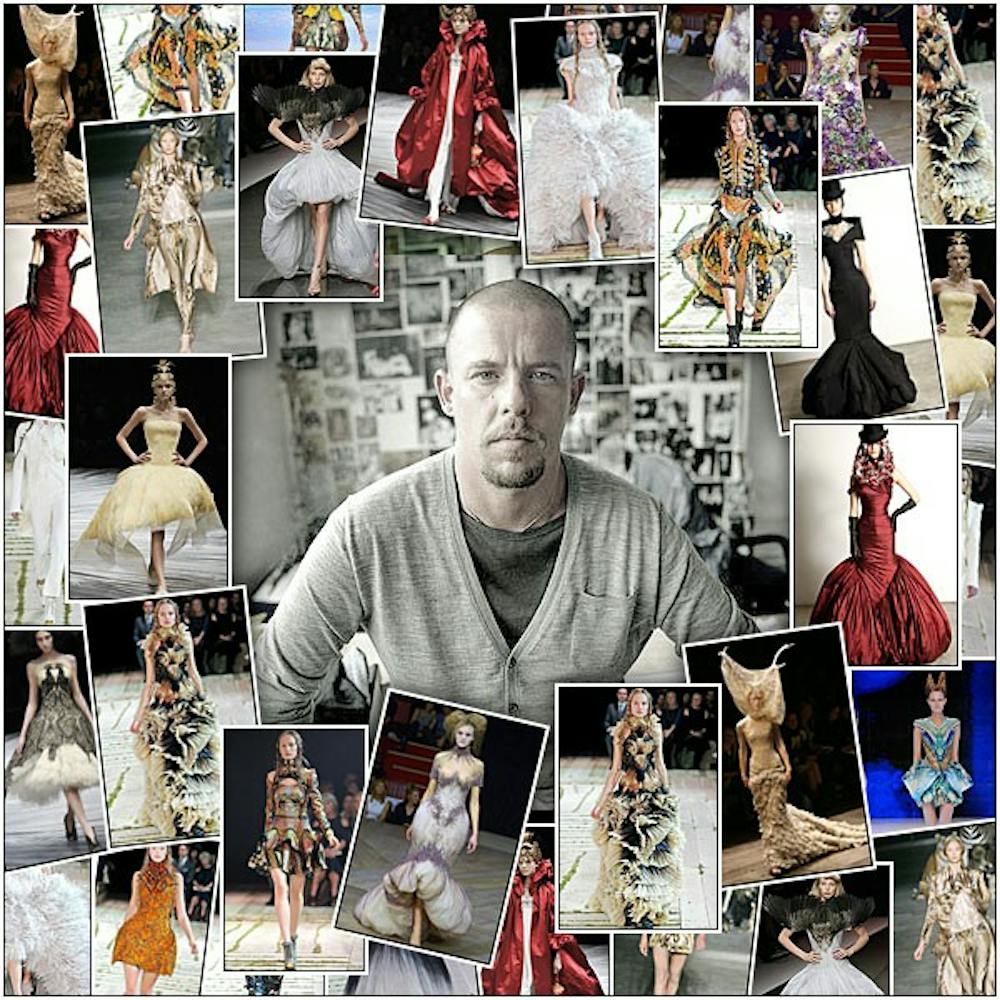The Alexander McQueen exhibit at the Metropolitan Museum of Art, entitled Savage Beauty, is a fitting ode to the late McQueen, a haunted fun house stashed with his brilliant treasures, a perfect compliment to this romantic and somewhat dark personage.
The show, consisting of 100 meticulously tailored ensembles and 70 accessories spans McQueen’s short but bountiful, 19-year career (his 1992 Central Saint Martins postgraduate collection to his final until his posthumous runway presentation in February of 2010). The most memorable (and famous) among them include McQueen’s “bumster” trousers, the pants that sparked the low-rider jeans craze a few years back (thanks McQueen for many an unpleasant view), the kimono jacket, the intricate three-point "origami" frock coat and an entire collection entitled Highland Rape (autumn/winter 1995-96), a bloody homage to McQueen’s Scottish heritage.
Aside from the shock value of his work, which earned the designer titles like “l’enfant terrible” and “the hooligan of English fashion,” the most striking thing about the show is its presentation. The usually plain walls of the temporary exhibition space on the second floor of the Metropolitan Museum of Art have been transformed into a labyrinth fitting of the genius and twisted imagination of the artist himself. A step into the show’s first room (which features pieces like a garment entitled “Jack the Ripper Stalks His Victims” (1992)), after walking through the museum’s 18th Century Impressionist galleries beside it, is about as shocking as finding a sex dungeon in the basement of your favorite bakery.
The second gallery entitled “Romantic Gothic and Cabinet of Curiosities” is perhaps the best example of this. The room is dark, with various nooks filled with dresses and accessories. The various television sets around the room show footage of old fashion shows, which look like performance art pieces rather than fashion, more of a nod to Maria Abramovi? than Chanel. One set eerily repeats a minute long clip of an enchained model descending a staircase from a past runway show. Like the Victorian Gothic that so inspired McQueen, his work often combines opposite elements like horror and romance, life and death, darkness and lightness.
Alexander McQueen’s macabre death laced with cocaine, sleeping pills tranquilizers and rope, on February 11 of last year, looms over the exhibit as though the artist himself has a cast a web of dark romanticism over the space. His presence is felt through the many accompanying quotes, scattered through the rooms and signed with his name. It is difficult to say whether it is a result of careful presentation or a true representation of reality, but one can’t help but come away from the show with a feeling of personal ineptitude and an impression of McQueen as a hero tortured by his own artistic genius.
Alexander McQueen: Savage Beauty, located in the Iris and B. Gerald Cantor Exhibition Hall, second floor, is free with Museum admission. Purchase tickets to Met Mondays with McQueen.
Related Links: Street lives in other cities this summer
Related Stories: Andrew Bird's free concert in Brooklyn

